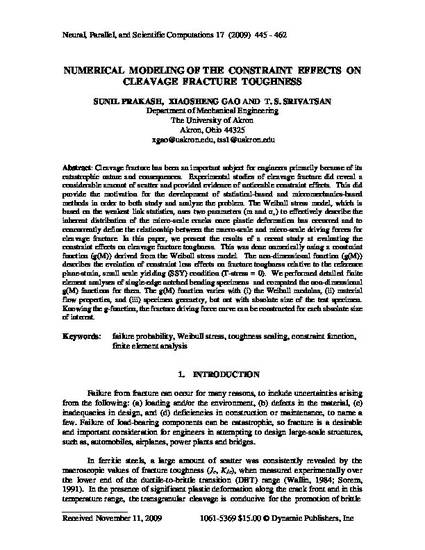
Cleavage fracture has been an important subject for engineers primarily because of its catastrophic nature and consequences. Experimental studies of cleavage fracture did reveal a considerable amount of scatter and provided evidence of noticeable constraint effects. This did provide the motivation for the development of statistical-based and micromechanics-based methods in order to both study and analyze the problem. The Weibull stress model, which is based on the weakest link statistics, uses two parameters (m and σ u) to effectively describe the inherent distribution of the micro-scale cracks once plastic deformation has occurred and to concurrently define the relationship between the macro-scale and micro-scale driving forces for cleavage fracture. In this paper, we present the results of a recent study at evaluating the constraint effects on cleavage fracture toughness. This was done numerically using a constraint function (g(M)) derived from the Weibull stress model. The non-dimensional function (g(M)) describes the evolution of constraint loss effects on fracture toughness relative to the reference plane-strain, small scale yielding (SSY) condition (T-stress = 0). We performed detailed finite element analyses of single-edge notched bending specimens and computed the non-dimensional g(M) functions for them. The g(M) function varies with (i) the Weibull modulus, (ii) material flow properties, and (iii) specimen geometry, but not with absolute size of the test specimen. Knowing the g-function, the fracture driving force curve can be constructed for each absolute size of interest.
Available at: http://works.bepress.com/xiaosheng_gao/34/
